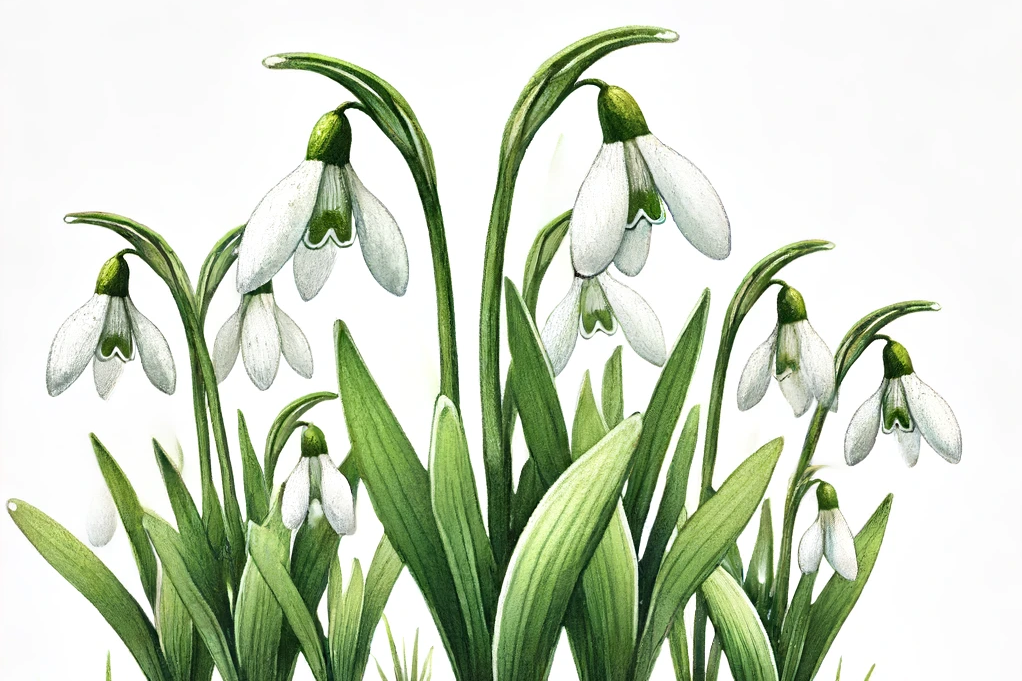Lily of the valley

What is lily of the valley?
Lily of the valley (Convallaria majalis) belongs to the asparagus family and is a perennial plant that grows in gardens and forests. It grows up to 30 cm high and has large, green leaves that emerge directly from the root. The flowers appear from March and are arranged in clusters. Each flower has a bell-like shape and is white or pink in color. Lily of the valley has an intense, sweet smell that becomes stronger, especially at night.
Why is lily of the valley poisonous to dogs?
Lily of the valley is a very strong poisonous plant that can be life-threatening for dogs. This is because all parts of the plant, but especially the flowers, contain various active ingredients that affect the cardiovascular system. These active ingredients include glycosides such as convallatoxin and convallarin. These can lead to cardiac arrhythmia, a drop in blood pressure, cardiac arrest and death in dogs.
How do I recognize lily of the valley poisoning in my dog?
If your dog has eaten lily of the valley, he may show symptoms of poisoning after a short time. These can vary depending on the amount and size of the dog, but typically the following signs can be observed:
If you notice these symptoms in your dog, you should see a vet or call animal emergency services immediately. Lily of the valley poisoning is an urgent emergency that needs to be treated quickly.
How is lily of the valley poisoning in dogs treated?
The vet will try to remove the poison from your dog's body and alleviate the symptoms. They may use the following methods:
- Activated charcoal: The administration of activated charcoal binds the poison in the stomach and prevents it from entering the bloodstream. If possible, this should be done within two hours of ingesting the poison.
- Laxatives : The administration of laxatives can speed up the elimination of the poison.
- Vomiting: The vet may also induce vomiting to remove the venom from the stomach.
- Antidote: If available, the vet may also give an antidote such as digitalis to reverse the effects of the glycosides.
- Infusions: The vet may also give infusions to make up for fluid loss and stabilize circulation.
- Medication: The vet may also give medication to support heart function and relieve pain.
How can I prevent lily of the valley poisoning in my dog?
The best prevention is, of course, to keep your dog away from lily of the valley. If you have lily of the valley in your garden or are walking in an area where they grow, you should always keep an eye on your dog and not let him nibble on the plant. You should also make sure that your dog does not drink any water where lilies of the valley have been standing or lying.
You should also make sure that you don't confuse your dog with wild garlic. Wild garlic is less poisonous to dogs than lily of the valley, but it looks very similar. One difference is the smell: wild garlic smells like garlic, while lily of the valley has a sweet scent.
Lily of the valley is a beautiful spring flower, but very dangerous for dogs. If your dog has eaten lily of the valley or you suspect it, you should waste no time and consult a vet. Quick treatment can save your dog's life.
If you notice any signs of hypersensitivity or poisoning in your dog, you should see your vet immediately. We are not a substitute for a vet, but we try to be as accurate as possible. Every dog reacts differently and we recommend you get a second opinion or consult your vet if in doubt.
Stay healthy and take good care of your four-legged friend!😊
Similar to Lily of the valley
The emergence of snowdrops officially marks the beginning of the farewell to winter. These delicate plants breaking through the snow are not only a beautiful sight, but also an interesting topic when...
The autumn crocus is a perennial plant that forms a brown-scaled bulb. This bulb survives the winter and produces new flowers the following fall. The flowers are funnel-shaped, have six equally...
Grape hyacinths (Muscari) are perennial bulbous plants known for their dense clusters of blue to purple flowers that resemble grapes. These plants are one of the first to bloom in spring and are...
Woodruff is a herbaceous plant that belongs to the Rubiaceae family. It prefers to grow in shady woodland areas and blooms in late spring with small white flowers. The plant is particularly well...



